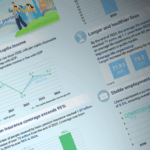China's population landscape is undergoing transformative changes, with new data revealing both remarkable advancements and complex challenges. Figures from the National Health Commission show the average life expectancy reached 79 years by 2024 – a 1.1-year increase since 2020 that Lei Haichao, head of the commission, calls "a notable improvement for a developing country."
Educational attainment paints an equally promising picture: Over 250 million Chinese citizens now hold higher education qualifications, with new workforce entrants averaging 14 years of schooling. This "knowledge dividend" could reshape China's economic competitiveness as automation reshapes global industries.
However, demographic headwinds persist. The 60+ population now totals 310 million (22% of citizens), while 220 million are aged 65+. A seven-year fertility decline briefly reversed in 2024, but experts warn sustaining this trend requires systemic solutions.
These shifts present a dual challenge: maintaining economic momentum through workforce quality improvements while reforming pension systems and healthcare infrastructure. The government's approach to this demographic recalibration will influence everything from consumer markets to global supply chains in coming decades.
Reference(s):
cgtn.com








